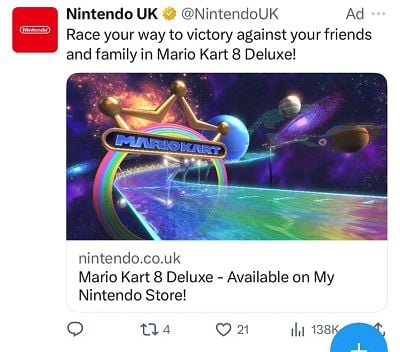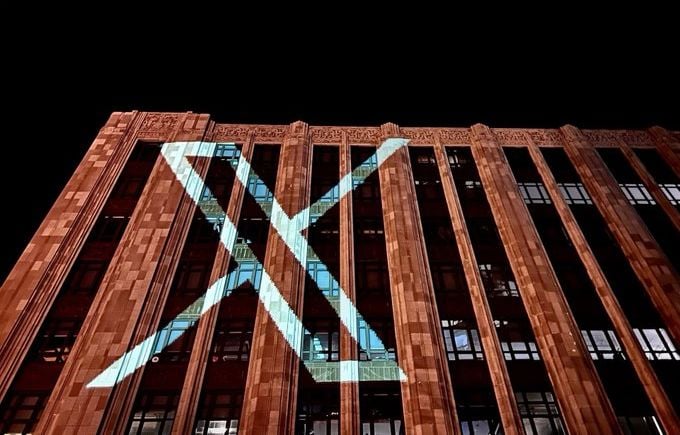It seems that X’s ad delivery system is suffering through a few glitches, which could end up leading to larger challenges for the X team.
While owner and CTO Elon Musk continues his public battle against the Anti-Defamation League (ADL), users have found that many X ads are being displayed in-stream without their required “Ad” label, while some X Premium subscribers are also not seeing ads appear on their profiles, limiting their ad revenue share.
On the first issue, as reported by TechCrunch, many X ads are currently being displayed without the recently updated “Ad” signifier shown, which would be in violation of FTC rules.
As per TechCrunch:
“In our tests, we came across a good handful of unlabeled ads from accounts we didn’t follow. In fact, the only indication they were an ad was by clicking on the three-dot menu at the top-right of the post. When you click this menu on an ad, you’re presented with various engagement options like “Not interested in this ad” or “Why this ad?” as well as tools to follow the account, mute it, block it and more.”
Many users have said that they’ve noticed the same, which could become a much bigger headache for the app, if indeed the FTC starts looking its way.
As you may recall, back in July, X began transitioning its ad display markers from the previous “Promoted” tags to a new, much smaller “Ad” disclosure in the top right of the post.

This is designed to make ads seem more organic in-stream, but it may also, in itself, be in violation of the FTC guidelines relating to adequate notice of paid promotions.
The FTC requirements on this state that all ads must be “clearly and conspicuously” signaled within digital apps. In a previous iteration of the rules, the FTC listed the requirement as “clearly and prominently”, so it may be that the X’s new “Ad” labels are now okay under this revised definition. But then again, the FTC says that both definitions are still valid, which could suggest that X’s smaller “Ad” labels are not prominent enough, depending on how the Commission defines such.
So what’s this got to do with X’s current missing ad labels issue?
Well, thus far, X seems to have avoided any FTC scrutiny over this change, but that could be because the FTC is waiting to receive an official complaint. Which means that maybe, X has only gotten away with these less conspicuous labels because the FTC hasn’t actively investigated them, and maybe, if this new issue is brought to the attention of the Commission, that could put all aspects of its ad display under the microscope.
Because I don’t think there’s any way that you could argue that a small, faded, two-letter tag in the top right of a post qualifies as “clear and conspicuous” labeling
Maybe, there’s some definitive measurement that the FTC uses to rule on such, but it seems like this should be a concern, and this new missing ad labels problem could end up putting X under renewed pressure on this front.
The other issue is ad delivery, and X subscribers not seeing ads displayed on their profiles. That highlights another problem with X’s ad revenue share program, which is still in the process of working out how exactly it pays participating users.
Sorry, this should be more stable over time. Revenue share is still very much beta code.
Worth noting that only verified users (aka X Premium subscribers) count for ad revenue, otherwise it’s trivial to game.
— Elon Musk (@elonmusk) September 2, 2023
But X is paying them, so how it’s actually paying people without having this all ironed out seems pretty fraught with potential errors.
And if X slips up on this, and creators end up seeing less ad revenue share as a result, you can bet that they’ll turn on Elon’s app faster than you can say “Blaze Your Glory”.
It seems that, maybe, these issues are aligned, and are part of a broader glitch in X’s ad delivery system. And with the company dealing with such a significant system change, with 80% fewer staff, while also seeking to transition to a new domain (x.com), and implement algorithmic shifts, it’s not surprising that there are occasional errors here and there.
But again, these glitches are significantly problematic, in the sense that they can lead to larger challenges.
Though Elon himself seems to be focused elsewhere, as he battles for free speech, by taking on Californian law makers, and the ADL, over what he sees as attacks on X’s push to allow more open communication.
Though in the ADL’s case, it seems that Musk is contradicting his own stance. In Elon’s view, free speech means that people should be able to say and post whatever they want, with the audience then left to decide what’s true and what’s not.
In that sense, the ADL should be able to say whatever they want too, right? If the ADL says that antisemitism has increased on the platform since Elon took over, and advertisers take that into account when deciding whether or not to run ads, that’s the exact type of free speech that Elon’s lauding in action. Right?
It seems, once again, that Elon’s view on free speech is a little more flexible than his outward statements suggest, with Musk regularly seeking to shut down any type of speech that impacts him, or his business interests, even if it contradicts his public claims.
Like, Elon saw no problem in labeling a random person as a pedophile, which caused that person significant reputational harm, but the ADL noting, with evidence, that X is allowing more hate speech is beyond the pale?
Essentially, X is likely to come under more regulatory scrutiny, and face more challenges as a result of all of these elements. Maybe it comes out stronger on the other side, but there’s certainly never a dull moment on Mr. Musk’s wild ride.



